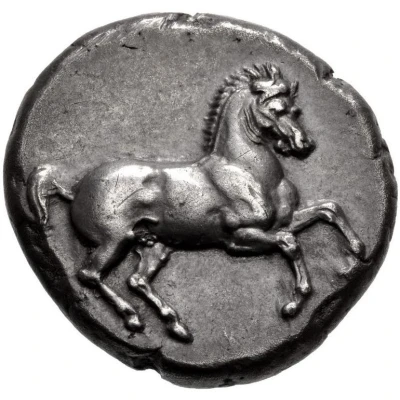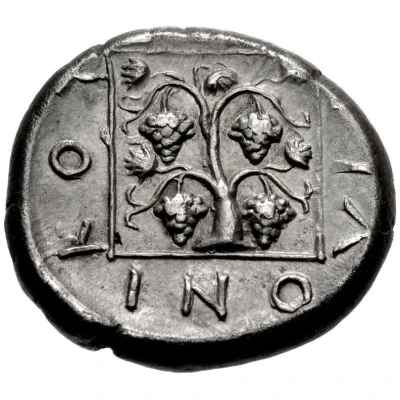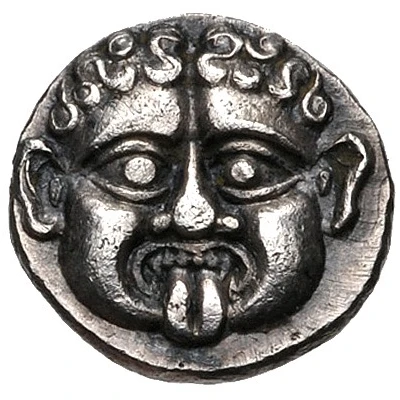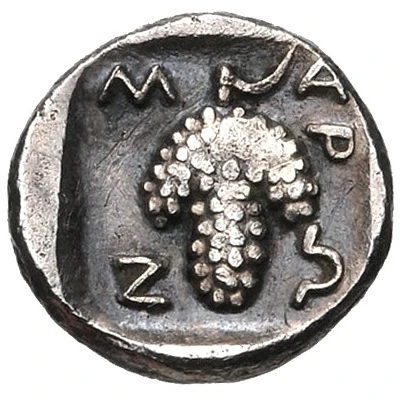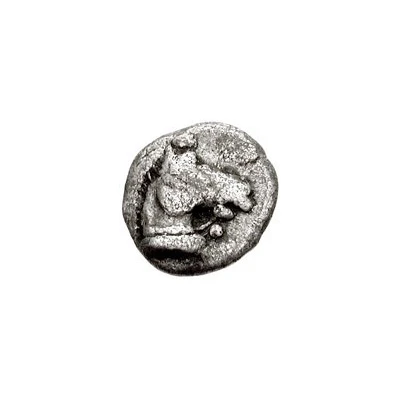
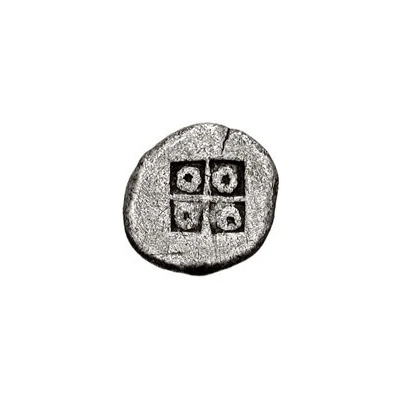

© Classical Numismatic Group, Inc.
Hemiobol 495 BC - 450 BC
| Silver | 0.44 g | 9.0 mm |
| Issuer | Maroneia (Thrace) |
|---|---|
| Type | Standard circulation coin |
| Years | 495 BC - 450 BC |
| Value | Hemiobol (1⁄12) |
| Currency | Drachm |
| Composition | Silver |
| Weight | 0.44 g |
| Diameter | 9.0 mm |
| Shape | Round (irregular) |
| Technique | Hammered, Incuse |
| Demonetized | Yes |
| Updated | 2024-10-10 |
| Numista | N#169856 |
|---|---|
| Rarity index | 100% |
Reverse
Quadrapartite incuse square with rosettes in each quarter
Comment
Cf. Schönert-Geiss 80 (diobol; forepart of horse right); BMC Thrace -; SNG Copenhagen -; Klein -; Weber 2324 var. (no pellet beneath horse's head).
Interesting fact
The Hemiobol coin from Maroneia (Thrace) was used as a form of currency in ancient Greece, specifically in the city of Maroneia, which was located in the region of Thrace. The coin was made of silver and weighed approximately 0.44 grams. Despite its small size, the Hemiobol was an important coin in ancient Greece, as it was used to purchase everyday items such as food, clothing, and other necessities. The coin's design featured an image of a mythical creature, such as a griffin or a sphinx, which was a common motif in ancient Greek art and symbolized the city's wealth and power. Today, the Hemiobol coin is a valuable collector's item and a fascinating piece of ancient Greek history.
